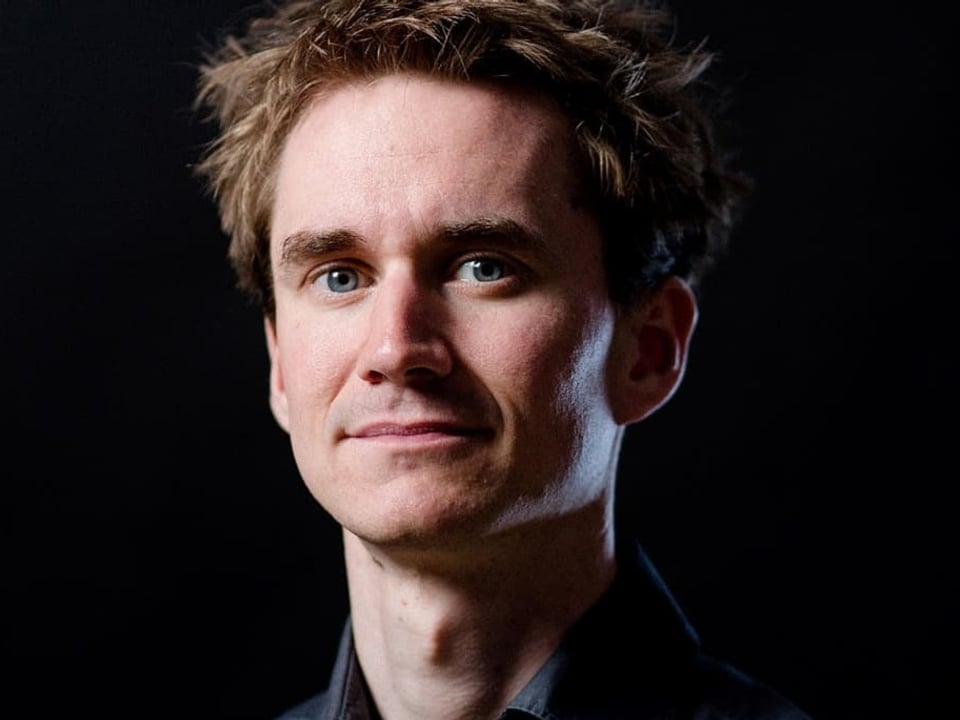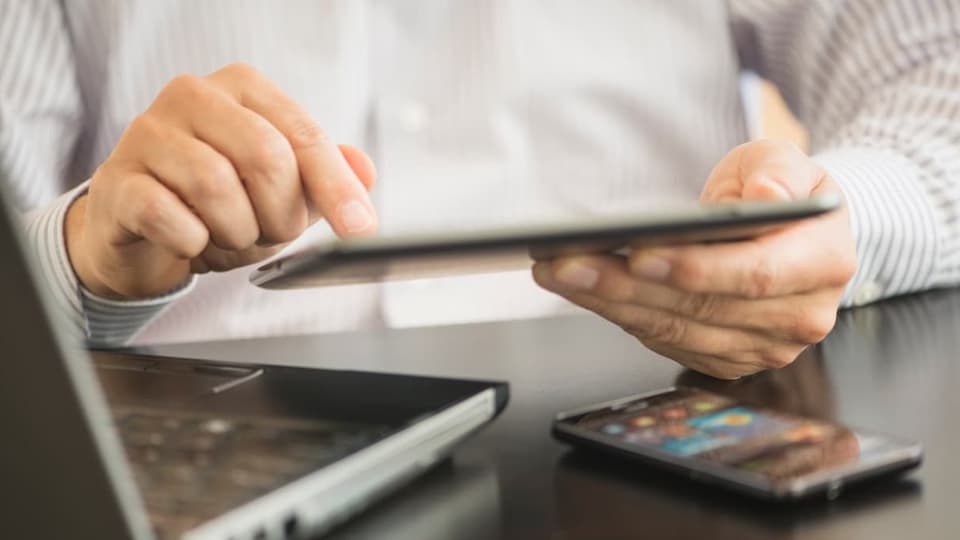When I was in school it was very easy. After each lesson of 45 minutes there was a small turning point: briefly clear your head and give your brain a break from Pluperfect or geometry, chat with your friends or air the room.
At the higher level, you usually had to change classrooms, which meant moving your body briefly. These external structures mean that children take a lot of breaks.
Take a proper break? A breeze!
Without knowing it, they are doing everything right. Because this kind of interruption helps the brain to recover. It roughly corresponds to the 5-to-1 principle: take a 10-minute break every 50 minutes.
Legend:
Clear your head with ease: It’s not just at school that children easily manage to take enough breaks.
Getty Images/John Slater
This relationship has proven to be successful in science, explains the German brain researcher and non-fiction author Henning Beck. The goal: “Always have the opportunity to regenerate so that we can continue better.”
In many professions, however, such breaks are hardly feasible, for example for a truck driver or a nursing specialist. And even those employees who could theoretically take more breaks during work hours than the one hour over lunch often don’t. Why actually?

Legend:
Taking breaks is healthy, says neuroscientist Henning Beck.
Marc Fippel and Henning Beck
In our society, breaks are misunderstood as a waste of time, says the brain researcher: “We optimize the breaks away.” A mistake, because breaks make you more productive, more creative and, last but not least, healthier, as research has shown. The break would be a simple and effective way to reduce constant stress and combat rampant exhaustion.
Emotionally exhausted Confederation
Since 2014, Switzerland has been surveying the extent to which we feel stressed by the job. Last year the so-called The Job Stress Index Switzerland has broken the 30 percent mark for the first time: According to this, over a third of employees in this country feel emotionally exhausted. For around 28 percent, the job stress is even in a critical range.
This number should give food for thought, explains occupational psychologist Norbert Semmer. The stress expert is a professor emeritus at the University of Bern and co-author of the study.
“The stress tendency increases if we don’t do anything about it,” explains the industrial psychologist. As a result of constant stress, people ran the risk of developing cardiovascular diseases, for example. There is also a risk that not everyone who is exhausted will be able to work until retirement.
Semmer knows what he’s talking about: in 2012 he campaigned for the “6 weeks of vacation for everyone” initiative. Even then, he wrote a report that made it clear how important small breaks are in everyday life to regulate the stress level.
Constant stress costs money
While those affected pay with their health in the worst case, the stress costs the economy money: according to the job stress index, it should be over 6.5 billion francs a year.
Rests do not affect performance.
The occupational psychologist knows that this could be remedied with more breaks: “Breaks are completely underestimated. People always think that taking a break means less work. But this is not the case. Breaks don’t affect performance.”
An eternal drive
If you don’t take a break, your brain is in danger of becoming exhausted. Brain researcher Henning Beck compares it to eating: “If we eat constantly, we will eventually burst. If I constantly consume information, I ‘burst’ too.”
This exhaustion shows itself, for example, in the feeling that time seems to be racing. Typical signs of exhaustion are also “difficult to switch off, not being able to distinguish the important from the unimportant and being constantly driven.”
Treacherous Technology
The brain researcher describes the exhaustion in the working world as a zeitgeist phenomenon: thanks to the speed and dissolution of limitations in the media, it is theoretically possible to communicate and work anywhere. That could lead to exhaustion.

Legend:
Unlimited communication: The modern working world tends to tempt people to check their e-mail inbox even on days off. This affects the perception of time
Getty Images/Basak Gurbuz Derman
“We live in times in which we are strongly driven by new technologies,” explains the brain researcher. These technologies are actually very practical, but are used improperly.
Myth of multitasking
Who doesn’t know it: listening to a virtual meeting with one ear and scanning an email with one eye at the same time. Work on multiple projects at the same time. Two screens with more information to choose from than can be digested.
In addition, there is the mobile phone, which also constantly has news ready for us. You don’t turn it off on the way home or at home: knock out another email or finish a presentation on the laptop.

Legend:
Do you spot the mistake? Working on several screens at the same time is common, but anything but brain-friendly.
Getty Images/Tetra Images
Multitasking is part of everyday life. The problem: It doesn’t work. The brain is not designed to process many tasks at the same time, explains brain researcher Beck. Like a television, it can only jump from one program to the next.
That’s why breaks are important
“Our mind is not designed to work well all the time,” says Beck. «I can switch on a computer at any time and it works. It’s different with a brain.”
The brain isn’t set up to keep going.
Beck compares this with sport: just as professional athletes incorporate phases of regeneration into their training plan, the brain also needs breaks at work.
Exhaustion occurs when the brain continues to work during the regeneration period: “The metabolism of the brain is not set to keep going. Just as you tire when you exercise, nerve networks also tire if they are constantly challenged.»
As with sport, the solution when thinking is to take a break: “Breaks are essential so that I can get better,” says Henning Beck.
«Progress is a snail»
But if breaks not only help against exhaustion, but also make us more productive at the same time, why don’t we take breaks more often and, above all, properly?
“The idea that taking a break is productive goes against our intuition,” explains work psychologist Norbert Semmer. It doesn’t occur to many managers that someone who is taking a break is productive. The data would show just that.
“Many are not convinced that these scientific results have to be implemented. It would help everyone involved,” says Semmer. However, he also observed that some companies are aware of the importance of the breaks and are trying to implement this knowledge.
A cultural change is needed for a healthy break culture, but the discussion has been going on for 100 years: “Progress is a snail,” says Norbert Semmer. ‘It’s slow. But at least things are moving forward.”
Minimum target micro break
While it would be ideal for our minds and bodies to take a 10-minute break every 50 minutes, this principle is not easily implemented for everyone. But there is an alternative: the micro break. It’s much easier to install and has a big impact.
Micro breaks last from one to three minutes. A brief moment in which we pause. Let your gaze wander. Let your tense shoulders droop. If you try it, you will be amazed at how long a minute can feel!
Radio SRF 2 Kultur, January 8th, 2022, 7:30 a.m.
